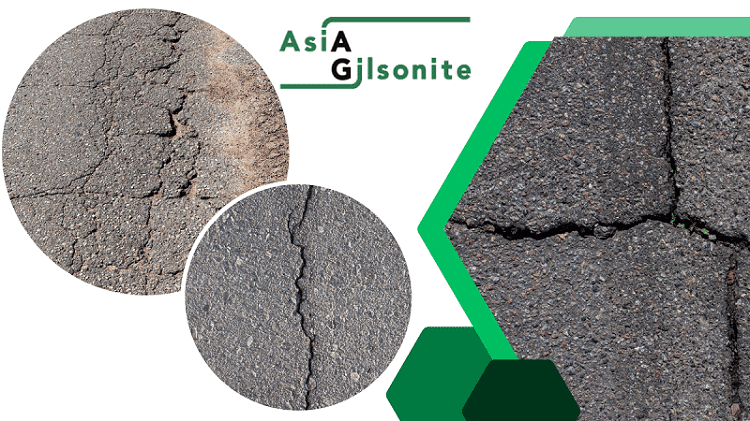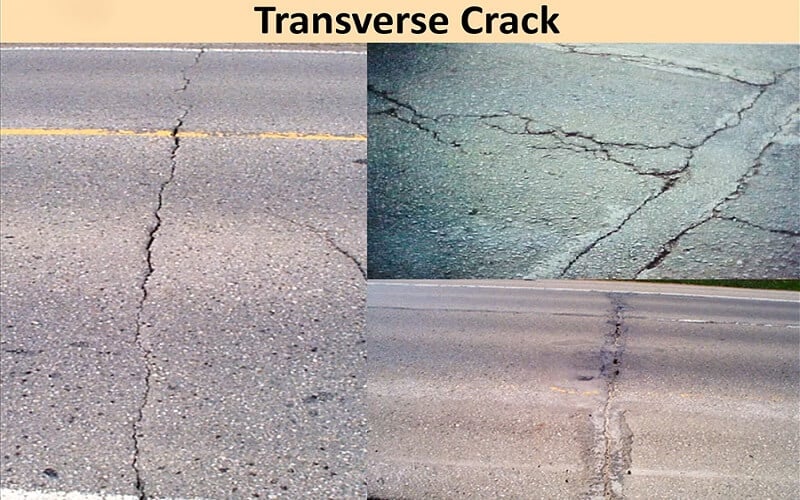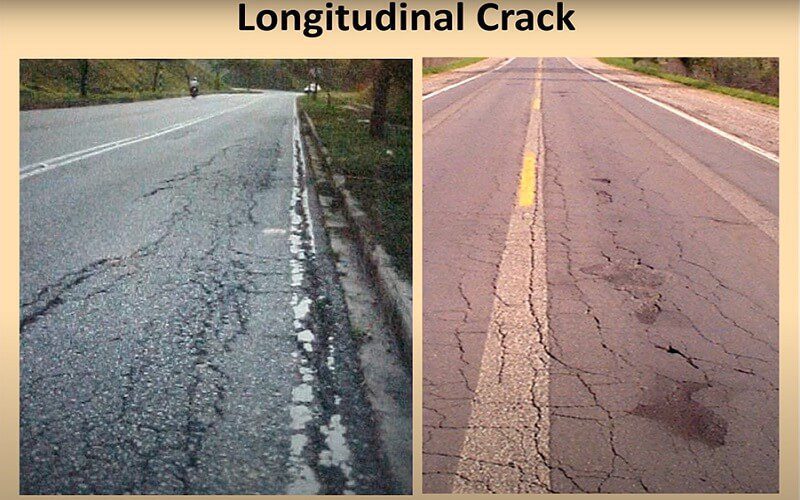There are various factors that contribute to the formation of many types of cracks in asphalt pavement . These factors encompass unfavorable weather patterns, drainage issues, utilization of substandard materials, and the weight of traffic. It is crucial to accurately identify the type and cause of each crack.
Prompt maintenance is essential to prevent further deterioration of the asphalt. Presented below are seven different types of asphalt cracking, along with the primary causes behind their occurrence and potential remedies for each.
Edge Cracking
Emerging at the outermost edge of a road or parking lot, edge cracking, is a consequence of inadequate drainage and lateral support, severe frost heaves, and insufficient time for the aggregate to settle. These factors are further exacerbated if the foundation of the asphalt is initially weak.
To address this issue, it is necessary to eliminate any overgrowth and debris present at the periphery of the asphalt pavement and fill the cracks with asphalt sealant. Additionally, it is crucial to ensure that the drainage system in your parking lot meets the required standards and is enhanced.
Slippage Cracking
Immediate attention should be given to slippage cracks, as they possess a curved shape and can rapidly transform into sizable and hazardous potholes, particularly in parking lots experiencing consistently high traffic volumes. Several factors contribute to this different type of crack in asphalt pavement:
The presence of non-adhesive substances, such as water or dirt between layers, can result in inadequate bonding between the surface and underlying materials. Another potential factor is the utilization of low-strength or substandard asphalt mixtures.
Typically, the solution involves removing the material surrounding the crack until a layer with strong bonding is reached, followed by patching the upper area.
Reflection Cracking
Reflective cracking, which is one of the types of cracks in asphalt pavement, typically indicates an underlying issue that goes beyond the surface. These cracks originate from the foundational layer of the asphalt and extend to the top layer. In some cases, minor cracks can be repaired using crack sealant. However, if the pavement is severely cracked, it may require replacing the entire layer.
Transverse Cracking
Cracks that run approximately perpendicular to the centerline are commonly referred to as transverse cracks. These cracks can occur due to low temperature thermal cracking or when the asphalt grade is too rigid for the prevailing climate conditions.
They are often a result of the asphalt layer shrinking and are not directly caused by heavy loads, although heavy traffic can worsen the situation. Typically, sealing is the recommended solution for this type of crack, but if necessary, it may require replacing the layer with a new overlay.
Fatigue Cracking
One of the most prevalent types of cracks in asphalt pavement is fatigue cracking, also known as alligator cracking due to its resemblance to the dry and fractured skin of alligators. Several factors cont ribute to this type of cracking, including the use of inadequate foundational materials, poor drainage systems, and harsh weather conditions. The most effective way to fix alligator cracking is through a complete depth patch-up. This involves removing the damaged area and replacing it with the appropriate asphalt mixture.
Block Cracking
Block cracking, which appears as large rectangular or square shapes on the pavement, can be attributed to various factors. One possible cause is the application of dry aggregate during the initial asphalt paving process, or the aggregate may have dried out excessively over time, necessitating replacement.
Additionally, low temperatures or freezing conditions can contribute to block cracking by causing significant shrinkage in the asphalt aggregate. This means that extreme temperature fluctuations can hinder the asphalt binder’s ability to contract or expand adequately.
Generally, traffic does not play a significant role in the occurrence of block cracking. While smaller cracks can be sealed, more severe cases of block cracking typically require overlay replacement as a solution.
Longitudinal Cracking
Another type of crack in asphalt pavement, known as longitudinal cracking, occurs parallel to the centerline of the pavement. Several factors can cause this type of cracking. It may result from asphalt shrinkage, poor construction of joints, or improper operation of the paving equipment. In such cases, the surface will need to be resealed with appropriate adjustments to rectify the issue.
In order to reduce the occurrence of various asphalt pavement cracks—including edge cracking, fatigue cracking, block cracking, and slippage cracking—the quality of the asphalt binder and additives plays a critical role. Gilsonite, as a natural asphalt modifier, is widely used to enhance binder strength, improve adhesion between asphalt layers, and increase resistance to temperature-related shrinkage and deformation. By improving the stiffness and durability of asphalt mixtures, Gilsonite helps mitigate common cracking mechanisms caused by weather fluctuations, poor bonding, and material aging, ultimately extending pavement service life and reducing maintenance costs.
Conclusion
In conclusion, it is crucial to fix and solve asphalt crack repair promptly. The causes of cracks in asphalt pavement are diverse, underscoring the importance of accurately identifying the underlying problem. If left untreated, cracks can expand and eventually lead to the formation of potholes. Once the problem has been identified, the appropriate remedy or fix can typically restore the asphalt to its intended functionality quickly and safely.








